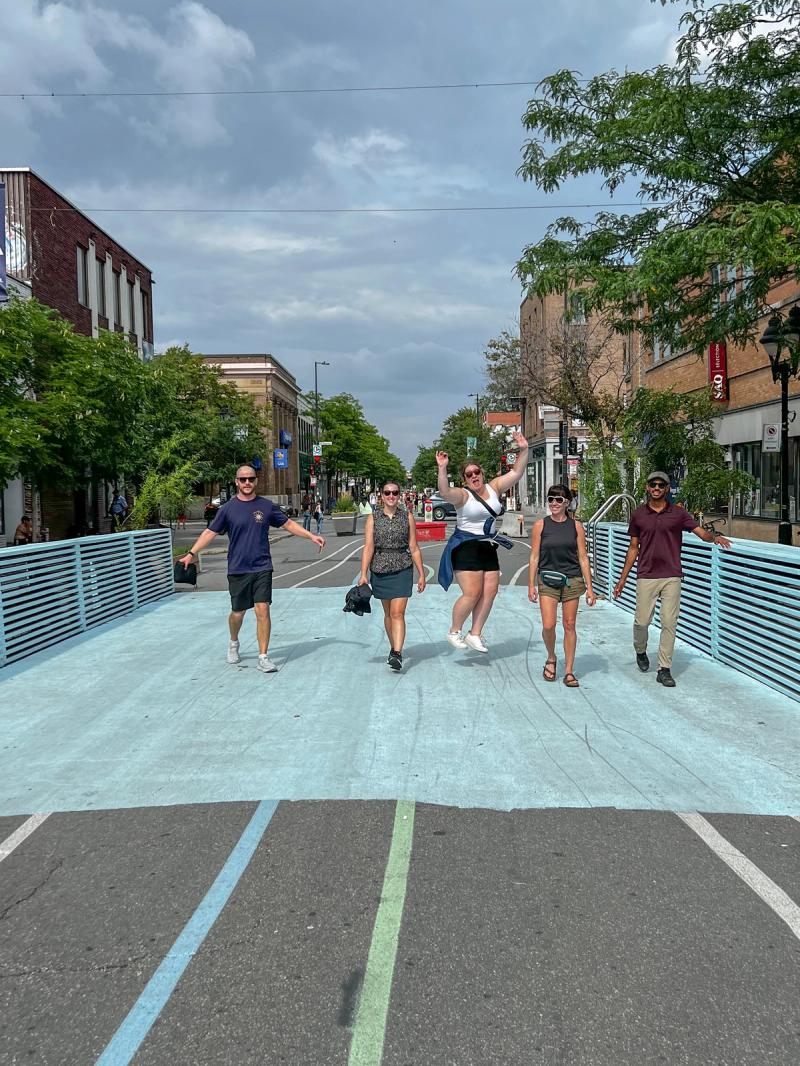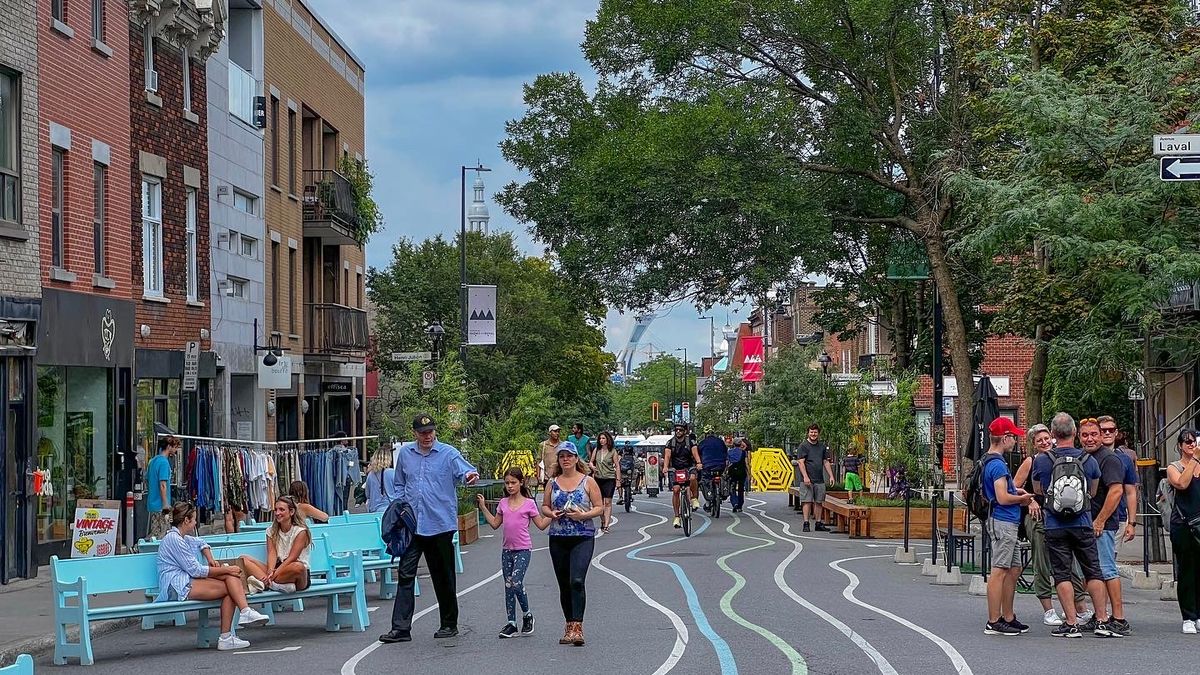
One Week in Montréal With Patronicity
This year, our retreat took us to Montréal, Canada, a city that has spent years reinventing itself and heavily investing in its public realm.
At Patronicity, we’ve been a largely remote team prior to the start of the pandemic, with “offices” (using that term very loosely) across the country in California, Indiana, Michigan, and Massachusetts. As a remote team, we’ve found it’s immensely important that we find time to be together in person. It provides value not just in better collaboration around larger, organization-wide projects but also allows us to become a more cohesive team, spending time connecting as people around the work that we all love to do: supporting strong, resilient, equitable, thriving, and vibrant communities across the globe.
This year, our retreat took us to Montréal, Canada, a city that has spent years reinventing itself and heavily investing in its public realm. For years, we’ve been hearing stories and seeing photos of some of the incredible community-driven placemaking, the new bike infrastructure (among the best in North America), and the agility and creativity with which the city responded to pandemic restrictions.
Our team left Montréal even more inspired, having seen the incredible partnerships between local government, nonprofit organizations, small businesses, and individual residents and artists, all stepping up and working together to build, in my humble opinion, one of the most active, impressive public realms in any city I’ve been to in North America.
An Urban Living Room
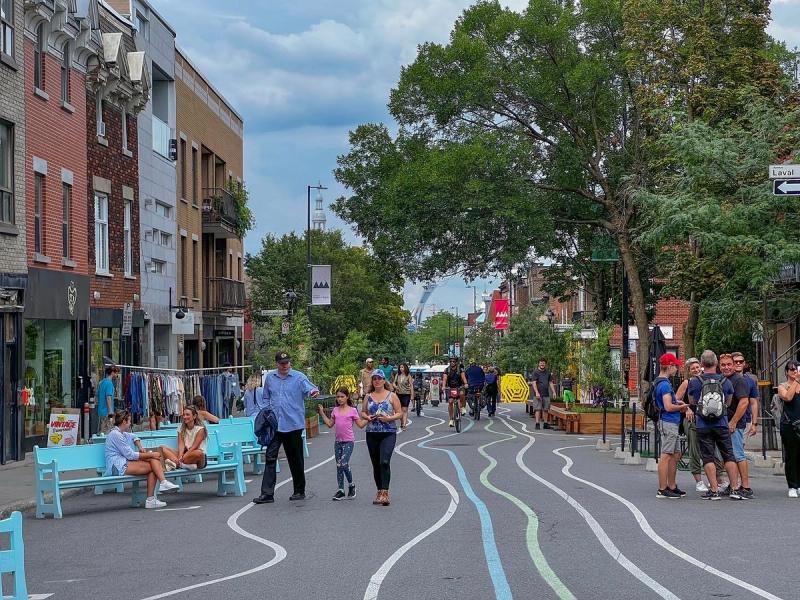
Our trip started with our team arriving from destinations across the US and meeting on l’Avenue du Mont-Royal, a temporary open street space created during the start of the pandemic in an effort to give residents and visitors a space to breathe outdoors in the neighborhood while also driving customers back to the commercial corridor.
We arrived early in the day on a Sunday morning and grabbed coffee, sat on the benches reclaimed from a decommissioned church, and watched the city of Montréal wake up. As the morning sun warmed our faces, the air filled with the sounds of kids learning to ride bikes, friends meeting for a morning walk, and families out for a stroll picking up pastries from the local market.
One of the great benefits of city life is that, as the famed sociologist and urbanist William H. Whyte said, the sidewalk and streets become “the river of life of the city, the place where we come together, the pathway to the center.”
When you first arrive in a new city, public spaces like this open street become the place to ground yourself in the local community. It’s where basic life happens in the public eye and where the energy of a city can truly be felt by those of all demographics, locals, and visitors alike, all for the cost of a nice walk. L’Avenue du Mont-Royal was the perfect destination for our team to come together for a week of learning, exploring, and connecting.
A Community Hub at All Hours– l’Avenue Du Mont-Royal

Since we stayed on the Plateau for our week in Montréal, many of our days started and ended on l’Avenue du Mont-Royal’s 2.3 km, or 1.4 miles, open street.
Open streets are not a new concept, but cities and towns across North America have been adopting them in response to the pandemic at a pace many in the placemaking field never thought possible. Many cities have experimented with turning streets over to the people for a day, and those programs have expanded to more days and new parts of cities as their popularity increases.
In New York, numerous neighborhoods across the city have their own open street, many 24/7/365, and they fall under the purview of local community groups with limited funding to maintain and program.
In Montréal, the city itself decided that based on the popularity of 13 summer-long open streets rolled out during the pandemic, they would expand the program by giving some certainty to the experiment. For the next three summers, Montréal has invested $10 million to allow local organizations, artists, businesses, and others to program and install seating, landscaping, and even public gardens into the streets themselves. Truly an incredible transformation in a space that we typically overlook as having little potential beyond the exclusive domain of parked cars.
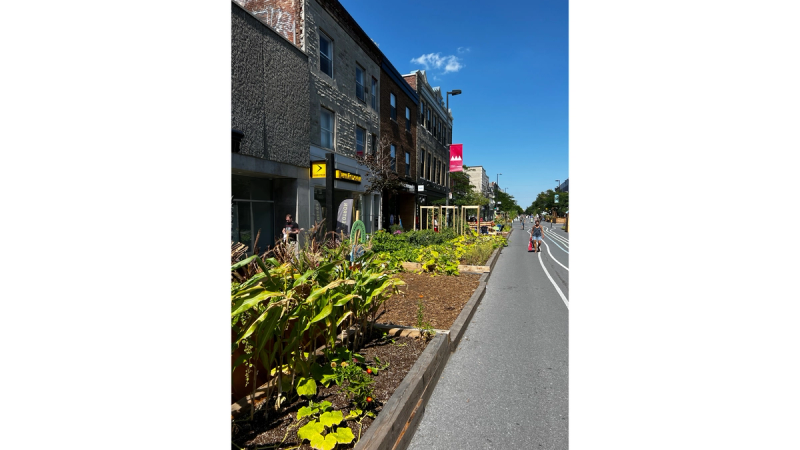
The energy on the street varied widely at different hours, but there was always energy. From Sunday mornings at 7am as the city woke up, residents headed to a nearby store for their morning coffee or bagel, to the bustling Wednesday evenings where diners at local restaurants mixed with the busker playing her guitar or the kids dancing to music in the center of the street. It may sound like an overly romanticized vision of what a city could be, but experiences like this are why we have cities and towns. They provide spaces for commerce, activity, and social connections, for developing trust in your neighbor and in your community, and, most importantly, a space for joy, something we tend to overlook in today’s bustling society.
Montréal’s Bike Infrastructure
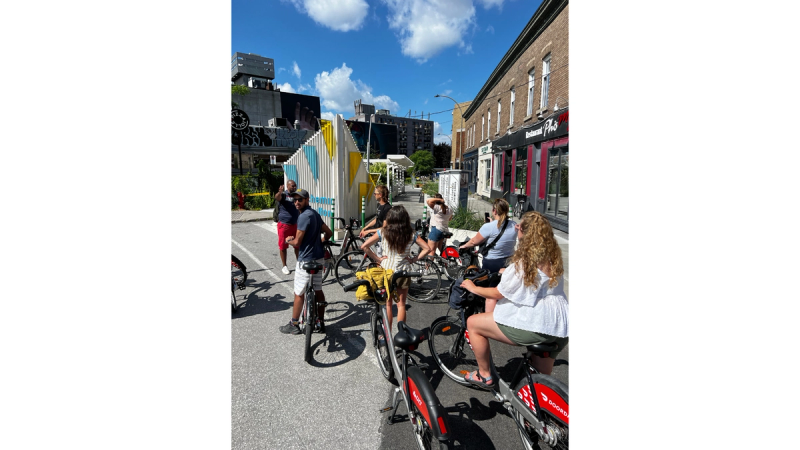
As of the summer of 2022, Montréal has built 165 km, or 102 miles, of fully separated, protected bike lanes that connect across neighborhoods and the city. That’s a nearly 30% increase from pre-pandemic levels and the city continues to rapidly expand its bicycle mobility infrastructure with the expansion and implementation of the Réseau express vélo (REV).
The REV is designed as a 185 km, or 114 mile, mostly protected bike network that crisscrosses the island of Montréal, connecting downtown and points of interest to the neighborhoods, allowing the city to achieve a goal of 15% of utility trips made by bicycle by 2027. As the network expands, a team of planners, designers, and landscape architects work to build out not just a safe and practical cycling network for the city but also one that adds resiliency measures into the neighborhoods they pass through.
Breaking up existing concrete with landscaping helps ease some of the impacts of heatwaves that are made worse by excessive paved space and lack of greenery in our neighborhoods and mitigates the impacts of urban flooding events by providing more permeable surfaces.
As a team, once we arrived in the city, we never used a ride-share, taxi, or even the subway, but we were able to take advantage of the BIXI bike-share system and bike across the entire city of Montréal, logging over 70 miles of biking during our stay. Our entire team loved traveling by bike, getting to experience the city around us as we safely and comfortably traversed the city, separated from traffic.
Takeaways
Don’t be afraid to experiment!
As we come out of pandemic restrictions and look at a rise in people moving into cities and walkable downtowns continuing across the globe, it’s not sustainable to continue our thinking from three years ago around how we utilize and move around public spaces.
Embrace tactical as part of the process.
Montréal’s open streets and bike networks have expanded and iterated over the past few years and continue to build on successes, failures, and learnings of years past. Don’t be afraid to follow a mentality of “the pilot is the process” and move the ball forward.
As we saw on l’Avenue du Mont-Royal open street, year one included an embrace from the community and challenges, including area traffic patterns, cross streets, and commercial vehicular access, that the organizations involved were able to work with and overcome.
Don’t neglect your public realm.
Montréal has made a point to invest heavily in the city’s public realm, from new public plazas in the downtown and neighborhoods to open street experiments in neighborhoods across the city; seemingly minor investments in the public realm can pay dividends to reconnect and build the social fabric of a community while promoting renewed economic activity and community health. Montréal’s largely commercial and office downtown core was far more lively than most major North American downtowns on a Saturday night. Festivals fill vacant plazas, theater troops roam the streets, and public realm placemaking initiatives, like a public beach outside a church, bring a bit of the unusual but welcome, relaxing escape to busy street traffic.

Provide more safe, affordable mobility options.
Embracing safe cycling as an option can provide a clean, safe, affordable, space-efficient, and healthy option for residents to move about in growing cities. Separated cycle lanes open up biking as a mobility option for those less comfortable with vehicular cycling, riding bicycles in the traditional travel lane, sharing the road directly with heavier vehicular traffic. Ensuring a connected network brings mobility by bike into the picture for more people.
Embrace creativity
Our cities and towns are filled with creative entrepreneurs, artists, and residents all willing to fill opportunities to activate the public realm, if we give them the opportunity and support to do so. Give these creative minds the space to operate and watch what can come to your community.
Merci!
First, on behalf of the entire Patronicity team, I’d like to thank the City of Montréal and its residents for an incredibly warm welcome to a place that’s truly become one of my favorite cities in North America. Everywhere we went, we were welcomed with open arms, smiling faces, and a desire to learn more about our work.
Specifically, we’d like to thank Michael Pizziferri and the entire team at Québec Delegation Boston for helping to coordinate meetings and tours with City of Montréal staff, and ensuring our team had a great background into what’s happening in Montréal and Québec.
Thank you to Stephane and Ralph from the city’s bike planning department for their generous time showing our team some of the 218 miles of bike paths in Montréal, and providing details on the birth and expansion of the now 115 mile REV protected bike network.
Thank you to Claude and the team at L’Avenue du Mont-Royal for organizing a nearly two-hour tour of their 1.5-mile open street turned linear park and for inviting folks from business improvement districts across the city to chat about their work, and allowing our team to share a bit more about our work.
Finally… We'd be remiss if we didn’t thank the following restaurants for keeping our team well-fed with some of the best meals we’ve each had in a long time: Saint Viateur Bagel, India Rosa, Restaurant District 4, Boulangerie Le Toledo, and many, many more!
We left this city inspired about what can happen when a city or town is willing to look differently at their public realm after it’s been viewed one way for so long and begin to open their eyes to what it could be. Montréal has done just this and we hope it serves as an example to cities and towns across North America. It certainly left a lasting impression on our team.
Merci beaucoup, Montréal!
